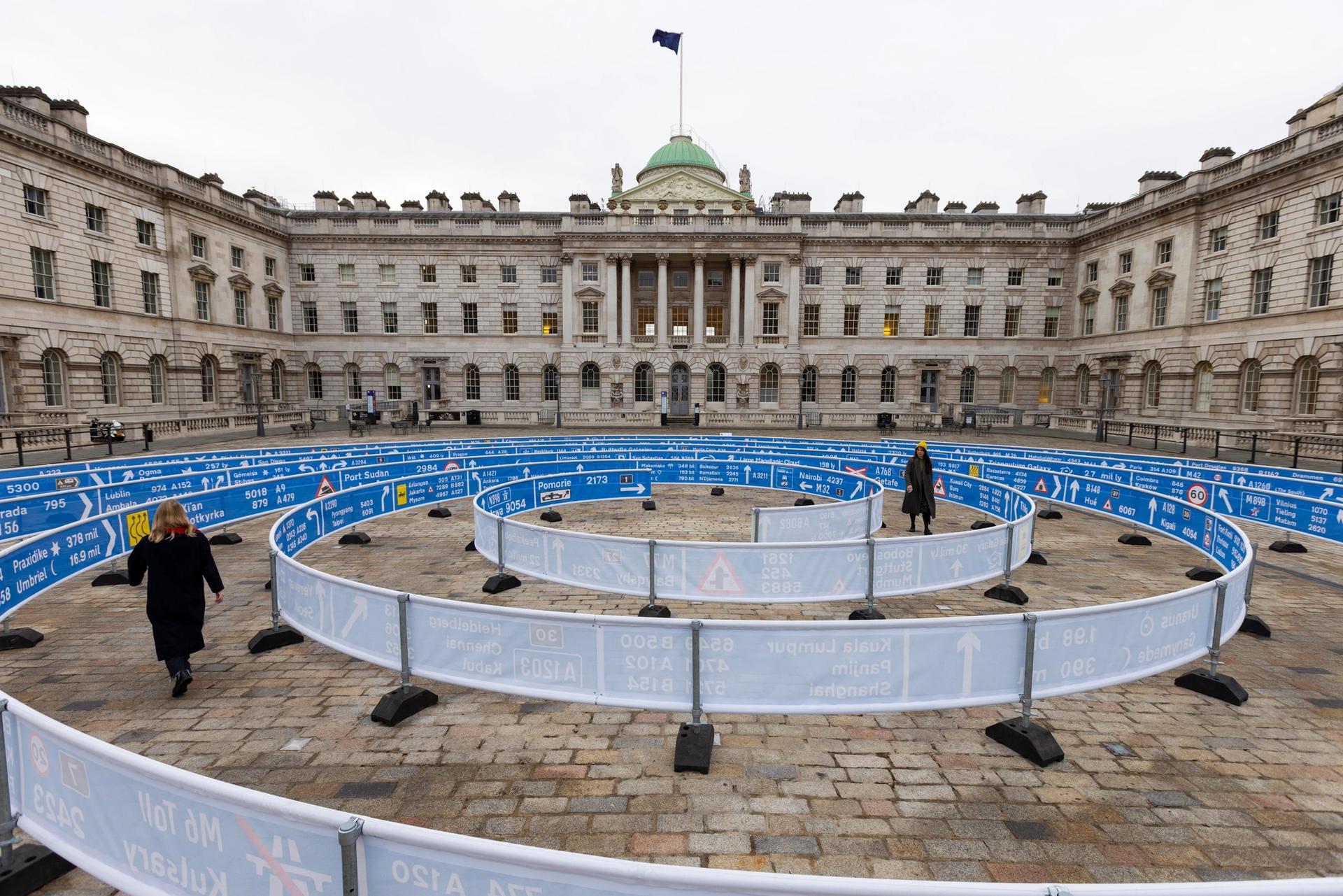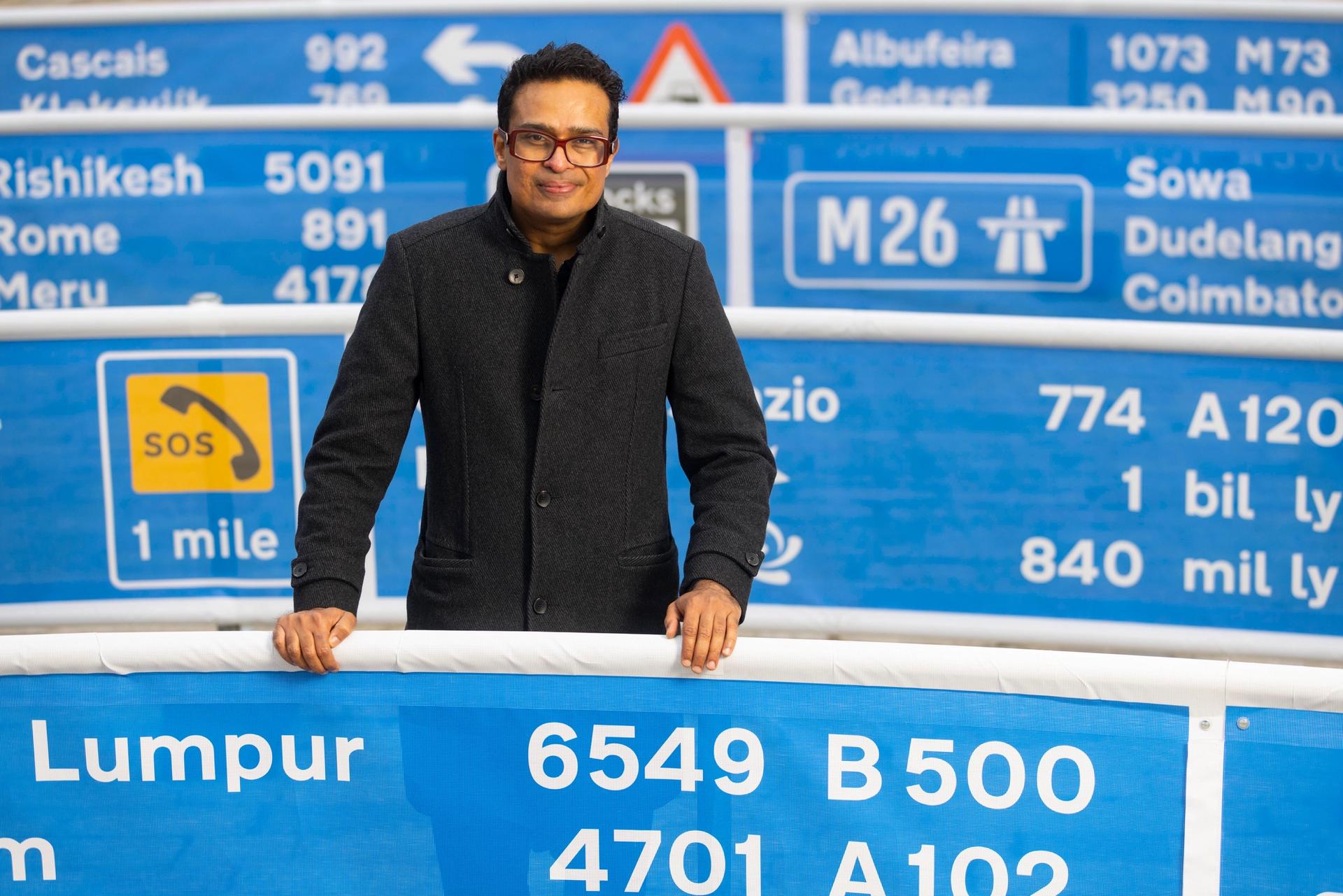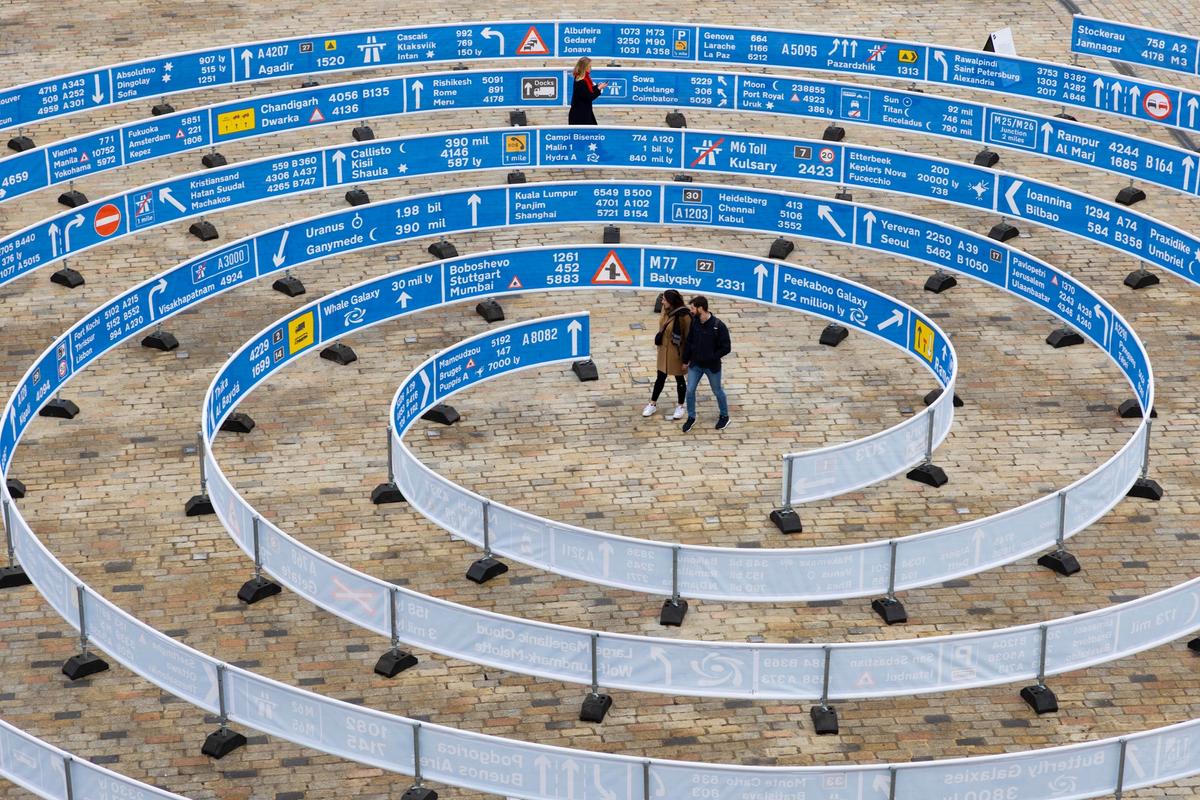Dominating the vast Georgian-era quadrangle of London's Somerset House for the next two months is an outdoor installation by the Mumbai artist Jitish Kallat, his first public commission in the UK.
Whorled (Here After Here After Here) is formed of two 168m-long concentric spirals made from biodegradable mesh, which are emblazoned on one side with the names of hundreds of worldwide locations—ranging from the nearby London Zoo to those further afield, such as Toronto and Tokyo—in a graphic style that closely mimics that of British motorway signage. Viewers are invited to navigate this work, accessible via two entry points, by strolling along its interior while reading the distances between each location and Somerset House, which have been calculated by Kallat and his team.

Whorled (Here After Here After Here), by Jitish Kallat, on display at Somerset House, London © David Parry, PA
“It's a work that compresses geography and skews direction, effectively playing with space,” Kallat said during a tour of the work yesterday evening. It plays with time, too, he points out: a number of these locations are ones that have been submerged underwater, such as the ancient Indian city of Dwarka, thought by archaeologists to be underneath the Arabian Sea. This allows Kallat to comment on the pressing issue of rising sea levels, and implicitly question which cities will still remain above water in the coming century. Kallat's native Mumbai, a peninsula largely built on reclaimed land, is at present threatened by rising waters; similarly, Somerset House, which sits on the banks of the River Thames, is also at higher risk of floods.
In keeping with much of Kallat's practice, further references to stars and galaxies, both existing and extinct, link the work to "the cosmos, and draws upon sacred geometry and alchemical diagrams".

The artist Jitish Kallat beside his work Whorled (Here After Here After Here), on display at Somerset House, London © David Parry, PA
The work, Kallat says, will eventually be deconstructed after its run, and repurposed into speed bumps and materials for actual motorway signage. "It will go back to the roads that inspired it—what could be more circular than that?" Kallat says.
“This is a big moment for contemporary Indian art,” says Kallat’s Delhi dealer Aparajita Jain, director of Nature Morte gallery. "It's not every day one of our artists is given such a global platform." Attesting to the work's commentary on the history between India and the UK, she points to a feature of the installation that is less immediately visible to visitors: a blue flag planted by Kallat atop the roof of Somerset House's north building. The site was once home to the board that oversaw British naval affairs around the globe, and whose fleets were instrumental in colonising South Asia. “The flag feels anti-colonial somehow,” Jain adds.
The Somerset House commission comes shortly after an exhibition curated by Kallat (and featuring his work) at John Hansard Gallery in Southampton, which included a series of historic letters written by Mahatma Gandhi to Lord Mountbatten, the last British viceroy of India, during negotiations around the independence of India. The show has now travelled to the Kochi Biennale.
Both the Kochi show and the Somerset House commission are supported by Kiran Nadar, the founder of the Kiran Nadar Museum of Art.
Cliff Lauson, Somerset House’s recently appointed director of exhibitions, described the work as "a meditative walking circuit" that brings together several strands of Kallat's practice, including navigation, scrolls, juxtaposing the micro and the cosmic, and ideas around how we relate to places around the world and to each other. He expresses an interest in having this installation eventually travel to other locations.
It is the latest courtyard commission from Somerset House, which in recent years has included the Filipino artist Leeroy New’s installation that transformed plastic waste into a fleet of docked ships.


